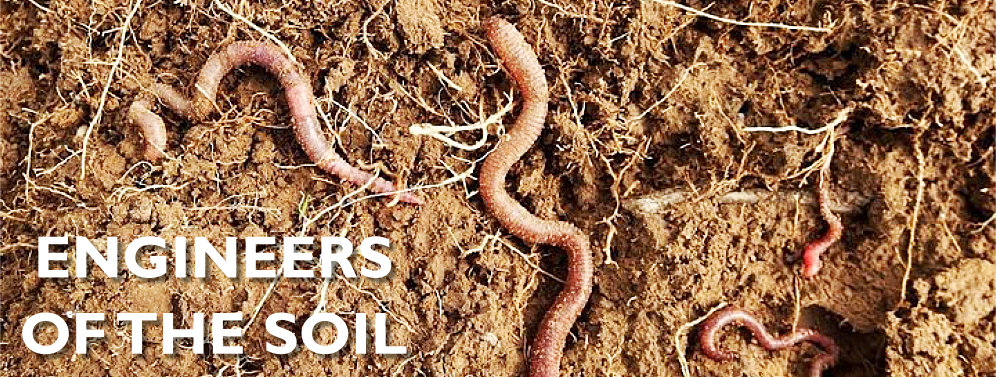
Earthworms are extraordinary creatures now seen as one of the most important animals on the plant whose influence is affecting more that just our humble gardens.
When Charles Darwin was asked to pick what he thought was the most important animal in the world, his choice may have surprised a few people.
He didn’t choose one of the earth’s impressive and dramatic creatures- he chose the earthworm as the most significant creature on earth and called it ‘nature’s plough’- opening the soil up with air and nutrients to make it more fertile and rich.
In recent years more researchers have identified how critical earthworms are not just in our everyday gardens but to our entire ecological system. Research projects now look at the role of earthworms in restoring polluted or degraded farmland.
The earthworm had taken centre stage.
But for gardeners they have always been a joy to behold.
Earthworms are great for the soil in your garden because they’re known to:
Bury and shred decaying plants
Plant and crop residue are buried by worm castings deposited on the surface. Earthworms use these plants as food which they transport from the surface into their burrows.
As the earthworms consume organic matter and mineral particles, earthworms poop out castings. Earthworms can move large amounts of soil from the lower strata to the surface. They can also carry organic matter down into deeper soil layers over periods of time.
A large amount of soil progressively passes through earthworms’ guts. It’s believed that they’ll turn over the top six inches of soil within two decades.
Improve water-holding capacity
By breaking apart organic matter, earthworms loosen the soil and increase water-holding capacity.
Loosen the soil and make it porous
Earthworms enhance porosity as they move through the soil. Some species make permanent tunnels deep into the soil. These tunnels can last long after the earthworm has died. This helps with soil drainage, especially during heavy rainfall.
Simultaneously, the tunnels minimize erosion due to surface water. The horizontal burrowing of other species increases overall drainage as they loosen the soil.
Provide channels for root growth
The tunnels made by the burrowing earthworms have available nutrients from their castings. This makes it easier for roots to penetrate deep into the soil.
Increase the soil’s microbial diversity
Earthworms get their nutrition from microorganisms like bacteria and fungi. However, there are more microorganisms present in worm castings than in organic matter.
As the matter goes through their intestines, it’s fragmented and inoculated with microorganisms. The increase in microbial activity aids the cycling of nutrients. It transforms them from organic matter to forms readily taken up by plants.
- If you cut an earthworm in half, does it make two? It is a common misconception that if you cut an earthworm in half it makes two new worms. The common earthworm will generally survive having a bit of its tail end cut off and may even grow a new tail but chop an earthworm anywhere near the front end and it will kill it stone dead as this is where the major organs are.
- As Darwin wrote "There are few animals which have played so important a part in the history of the world than the earthworm." They are a natural way to maintaining soil structure and fertility as they aerate the soil, improve drainage and bring nutrients to the surface. These actions help support the ecosystem services that soil provides.
- No one is exactly sure how many earthworms there are in the soil but recent estimates suggest that good quality soil can have up to two million earthworms per acre
- Earthworms are so sensitive to light that just an hour in daylight leaves them paralysed.
- An earthworm’s diet consists of decaying organic matter, such as leaf litter or crop residue. An earthworm's digestive system runs through the length of its body. Earthworms themselves, are an important source of food for plenty of creatures, including hedgehogs, foxes, moles, many birds, slow worms and amphibians
- How many species or types of earthworm are there in your garden?
In the UK we have 27 species, 10 of which are commonly found in agricultural soils and these can be grouped into three ecological types: - Surface dwelling earthworms (Epigeic earthworms) don't make burrows but live on the surface of the soil – often in leaf litter and in compost. They rapidly consume the compost material and reproduce very quickly. They are usually bright red or reddish-brown, and the compost worms in particular (known as brandling or tiger worms) are often stripy.
- Shallow burrowing or topsoil earthworms (Endogeic earthworms) are pale coloured - pink, grey, green or blue - and make horizontal burrows through the soil to move around and to feed. Some can burrow very deeply in the soil.